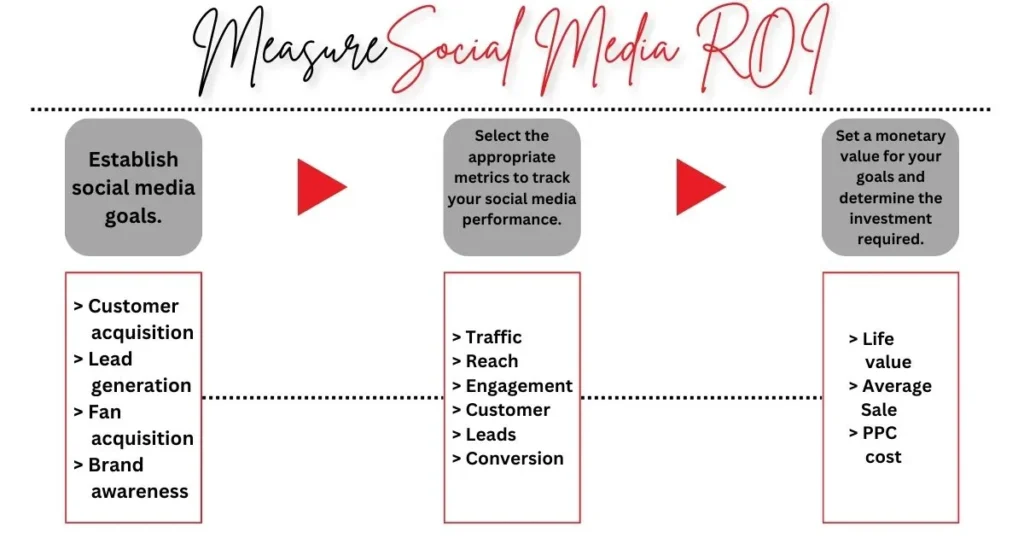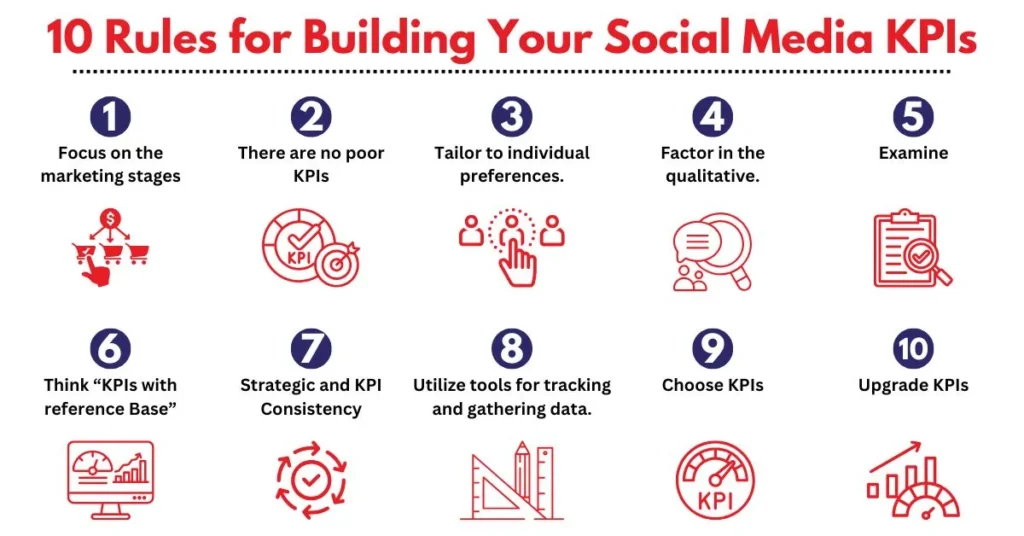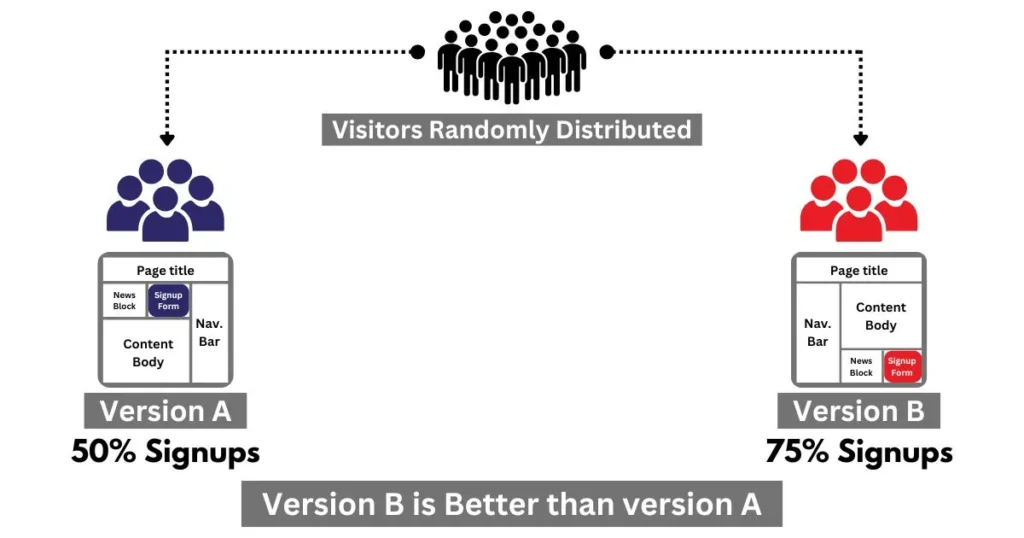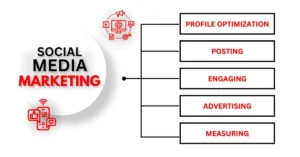
Every social media campaign requires the identification of its return on investment (ROI) to achieve success. Businesses need social media ROI measurement techniques to evaluate which social platform activities produce actual outcomes. One needs to understand social media performance tracking and evaluation to make successful business decisions, whether they work in marketing, social media management, or business leadership.
The following guide explains every essential step and methodology needed to measure social media return on investment. The article covers tracking social media engagement together with performance measurement tools as well as calculating paid campaign ROI, setting key performance indicators (KPIs), and analyzing social media analytics dashboards with numerous other vital points. The following guide contains real-world illustrations through case studies that demonstrate these concepts as they function in everyday practice.
Table of Content
- 1 How to Track Social Media Engagement?
- 2 Tools for Measuring Social Media Performance
- 3 Calculating ROI from Paid Social Campaigns
- 4 Setting KPIs for Social Media ROI Success
- 5 Understanding Social Media Analytics Dashboards
- 6 Tracking Brand Sentiment on Social Platforms
- 7 A/B Testing in Social Media Marketing
- 8 Creating Social Media Performance Reports
- 9 The Role of UTM Parameters in Social Tracking
- 10 Case Studies: Social Media Campaigns That Worked
- 11 Conclusion
How to Track Social Media Engagement?
The monitoring of social media engagements stands as a basic criterion when evaluating social media success. User interaction with content demonstrates how much information aligns with audience preferences. This phenomenon directly measures content effectiveness for audiences.
What are the Key Metrics to Track in Social Media ROI?
Likes, Comments, Shares, and Reactions: Facebook engagement measurement remains basic and revolves around these four important metrics. The level of audience engagement increases when social media content obtains many likes together with numerous comments, followed by frequent shares.
Click-Through Rate (CTR): The evaluation of CTA effectiveness requires monitoring link tap interactions in your post to determine the performance of your call-to-action.
Time Spent on Post: Users spend time watching posts because this metric lets you determine both the importance and effect of posted content.
Tools for Tracking Engagement:
- Sprout Social: The system delivers comprehensive report analytics, allowing users to track engagement statistics on different social networks.
- Hootsuite: Helps businesses monitor their engagement and manage social media campaigns from a central dashboard.
Tracking engagement is a critical step in understanding what content works and what doesn’t. By regularly reviewing engagement metrics, businesses can refine their strategies to foster more meaningful interactions with their audience.
Tools for Measuring Social Media Performance
Businesses have access to different tools for social media performance measurement, which provide specific insights into their marketing campaigns.
Google Analytics
Social media performance becomes measurable using Google Analytics even when it exists outside standard websites. The implementation of UTM (Urchin Tracking Module) parameters allows you to follow how social media traffic performs on your website, which facilitates a better understanding of conversion results from social efforts.
What tools are used for Social Media Native Analytics?
Different social networks offer analytics systems that analyze information particular to their domain.
Facebook Insights
Instagram Insights
Twitter Analytics
LinkedIn Analytics
The available tools provide detailed information about user interaction, audience extent, and target audience characteristics along with additional metrics.
Third-Party Analytics Tools
- HubSpot: HubSpot enables users to track and generate social media reports through their unified software system.
- BuzzSumo: BuzzSumo facilitates the assessment of content performance through multiple online platforms.
Any social media manager should consider these tools essential since they enhance data collection efficiency across multiple platforms.
Calculating ROI from Paid Social Campaigns
Controlled business investments through paid social media advertising remain substantial. To gain monetary value from these campaigns, you need to properly evaluate the return on investment.
What formula is used for Calculating Social Media ROI?
The formula for calculating ROI appears as follows:
ROI=Revenue from Social Campaign−Cost of Social CampaignCost of Social Campaign×100\text{ROI} = \frac{\text{Revenue from Social Campaign} – \text{Cost of Social Campaign}}{\text{Cost of Social Campaign}} \times 100ROI=Cost of Social CampaignRevenue from Social Campaign−Cost of Social Campaign×100
Key Metrics to Consider:
- Ad Spend: Payable social media advertising expenses make up the total spending.
- Leads/Conversions: Your campaigns produced a total number of leads and sales resulting from them.
- Revenue: The measured financial revenue generated through paid campaign initiatives.
Example: If you spent $1,000 on Facebook ads and generated $5,000 in sales, your ROI would be:
ROI=5,000−1,0001,000×100=400%\text{ROI} = \frac{5,000 – 1,000}{1,000} \times 100 = 400\%ROI=1,0005,000−1,000×100=400%
Campaign success is denoted by a high ROI, but low or negative ROI values point toward improvement opportunities.

Setting KPIs for Social Media ROI Success
Key Performance Indicators function as quantifiable values that demonstrate the success level of business objectives fulfillment. Clear KPIs for social media help you maintain focus on particular aims and measure performance evolution from the beginning.
What are Common Social Media KPIs?
Reach and Impressions: This set of performance indicators lets you understand both post visibility rates and frequency.
Engagement Rate: Measures the level of interaction relative to your audience size.
Follower Growth: Tracking the increase or decrease in followers over time helps assess your brand’s growing presence.
Conversion Rate: The proportion of website visitors who execute the desired goal represents the conversion rate.
The selection of particular KPIs for social media performance helps you evaluate your activities while supporting data-based choices.
Understanding Social Media Analytics Dashboards
All social media data gets displayed through a centralized dashboard structure known as a social media analytics dashboard. The overview of essential metrics, combined with trend analysis and KPI monitoring, to compute ROI exists within their ecosystem.
Popular Analytics Dashboards:
- Google Data Studio: Users can connect Google Data Studio to multiple social media sites through its adaptable dashboard tool.
- Cyfe: The dashboard tracks both social media performance and the entire business data in one comprehensive system.
- Zoho Social: Zoho Social provides easily comprehensible reports and analytical tools that focus on social media metrics.
The visual performance assessment through dashboards lets businesses find improvement opportunities while it serves as an essential tool for social media ROI measurement.
Tracking Brand Sentiment on Social Platforms
The emotional reactions and perceptions of consumers toward your brand come from social media discussions. Brand sentiment measurement stands vital because it enables you to handle your brand reputation while making necessary adjustments to your marketing approach.
What tools are used for Sentiment Analysis?
Brandwatch: The solution measures brand sentiment across platforms, which include social media and blogs, alongside other online platforms.
Hootsuite Insights: Uses AI to analyze social media conversations and gauge public sentiment.
Your brand sentiment stands healthy when your audience expresses positive feelings, but negative sentiments show areas for brand improvement.
A/B Testing in Social Media Marketing
The method of comparing different versions of social media posts or ads under A/B testing is known as split testing. A/B testing functions as a strong method to enhance content quality before launching marketing campaigns.
Steps for A/B Testing:
- Identify the Variable: The identifiable variable can be either the headline or image with CTA or the post-text content.
- Create Two Versions: Design two versions, with each one containing one modifying feature.
- Run the Test: Publish the two versions for performance tracking purposes.
- Analyze the Results: Measure the success between versions to select the one that generates the highest level of engagement and conversions.
A/B testing helps you understand what your audience prefers, allowing you to fine-tune your content for maximum impact.

Creating Social Media Performance Reports
Social media performance reports serve as essential tracking mechanisms for long-term progress since organizations need them at regular intervals. The reports present your essential metrics and KPIs, so they provide useful insights needed for developing upcoming plans.
Key Components of a Social Media Report:
- Campaign Overview: The document presents an overview that includes organizational objectives and target demographic characteristics along with content management guidelines.
- Metrics and Analytics: The system provides extensive data measurements regarding audience engagement, together with audience reach statistics and conversion statistics.
- Insights and Recommendations: Actions can be derived from analyzed data to understand both successful elements and areas requiring enhancement.
Organizations must prepare reports with distinct data targeting their predetermined business objectives.
The Role of UTM Parameters in Social Tracking
UTM (Urchin Tracking Module) parameters enable users to add tags to their URLs in order to track social media campaign effectiveness. The parameters provide tracking abilities for addressing both visitor origins and conversion levels from your social media content.
How to Use UTM Parameters?
Source:
Determine which platform you will use, either Facebook or Instagram.
Medium:
Specify how the link was shared (e.g., post, ad).
Campaign:
Name the campaign (e.g., Spring Sale).
The implementation of UTM parameters allows you to monitor social media post performance, which enables campaign optimization through factual evidence.
Case Studies: Social Media Campaigns That Worked
Case Study 1:
Coca-Cola executed its “Share a Coke” campaign through social media channels in a way that effectively involved customers. Coca-Cola achieved massive social media engagement through their promotion that personalized Coke bottles with common names, alongside sharing photo participation. Through this effort, Coca-Cola managed both an increase in sales as well as favorable brand perception.
Case Study 2:
Airbnb enables users to share authentic experiences through their content. Airbnb uses its social media platform to ask users for travel content, which then grows an engaged community while attracting new customers.
Conclusion
The analysis of social media ROI plays an essential role in maximizing your marketing campaigns while guaranteeing the best usage of your time together with budget allocation. Data-driven decisions to enhance campaign performance become available through the combination of engagement tracking and KPI setting analytics tool implementation and ongoing content testing.
Social media continues to change regularly in its current state. Your success depends on the continuous adaptation of your strategies, which lets you outpace competing companies. The guidelines presented here will give you the necessary skills to effectively measure and boost your social media return on investment.
Featured Blogs

Mastering Social Media Content Strategies: A Comprehensive Guide
Organizations utilize detailed social media content strategies to determine their posting material as well as scheduling and audience interaction procedures....

Social Media Marketing Basics: A Complete SMM Guide
Having success in modern digital marketing requires social media activity as a basic necessity for businesses that aim to expand...
Fawaz Ahmed
Fawaz Ahmed is a results-driven social media marketing expert with a passion for helping businesses build strong online communities, boost engagement, and drive conversions. With years of experience in social media strategy, content creation, and paid advertising, Fawaz stays ahead of the latest platform updates and digital trends. As a key contributor to the industry, he shares expert insights, proven strategies, and in-depth guides on social media growth, brand positioning, and audience engagement. Whether it's optimizing campaigns for maximum reach or crafting viral content, Fawaz is dedicated to empowering businesses with actionable social media marketing strategies. He is also recognized as a Daraz expert, helping brands scale their presence and sales on one of South Asia’s leading e-commerce platforms. 📢 Follow Fawaz Ahmed for the latest social media trends & strategies!
 Limited Spots Available! Apply Now!
Limited Spots Available! Apply Now!  Experience top-quality learning before you commit!
Experience top-quality learning before you commit!
Links will be automatically removed from comments.